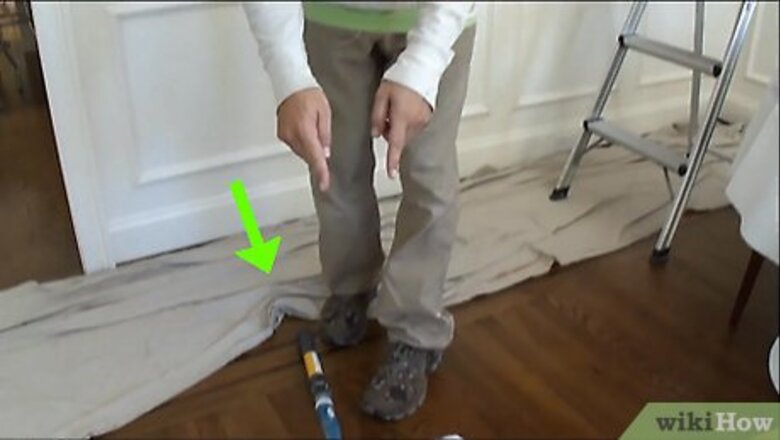
views
X
Research source
When it comes time to paint, following some simple strategies will help to ensure that your wall looks as polished as possible.
Setting Up Your Paint Surfaces and Materials
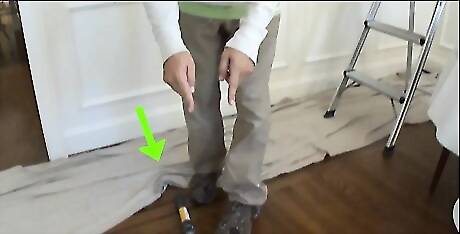
Protect your floor and furniture. Before you start painting, you will need to cover your floor with a painter's canvas. Move and/or cover any furniture or other valuables in the room using painter's plastic. You can move your furniture to the center of the room and place a tarp or canvas cloth under the wall that you will be painting. Place your painting materials on the tarp and keep them there at all times. Do not put brushes, paint buckets, or paint trays on your bare floors or on other bare surfaces.
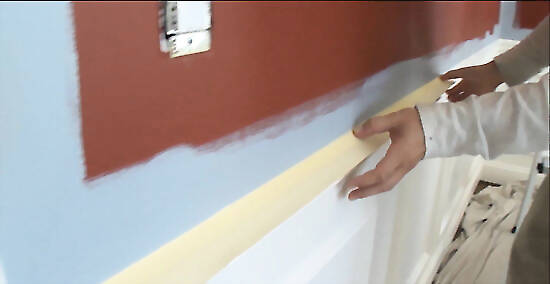
Apply painter’s tape to the edges. Painting in a straight line can be difficult, so if this is your first time painting, then you will probably need to apply blue painter’s tape to the edges of your walls and any molding or fixtures. Apply the painter’s tape so that it is even with the edges of the walls, molding, and fixtures. Keep in mind that you do not need to press hard on the tape when you apply it. Using a bit of gentle pressure will be enough to keep it in place.
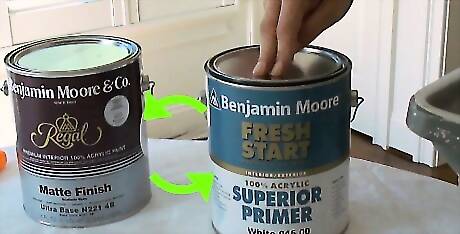
Mix your primer and paint. Before you use your primer or paint, take a moment to mix them well with a mixing stick. This will help to ensure that the pigments in the primer and paint are evenly distributed. Never shake your paint cans. This can cause dry paint chips from the lid to mix into the paint. Always stir it with a mixing stick.
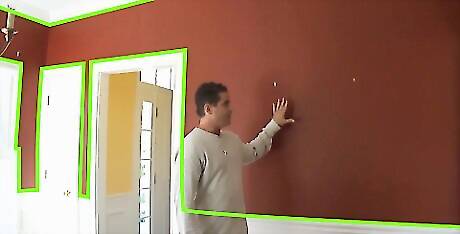
Prep your walls. A smooth even surface will make it easier to achieve professional quality results, so take the time to check your wall for imperfections and fix them up before you get started. For example, you can. Sand patched and/or rough surfaces smooth using 220-grit sandpaper. Vacuum or wipe away dust when you are done.
Priming the Wall
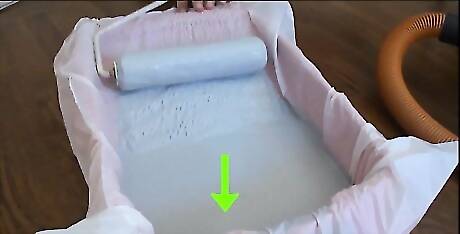
Pour primer into the paint tray. Do not overfill the tray to the point that the angled part of the tray with ridges is covered with primer. You will only need an inch or two or primer in the tray. You can use a cheap tray liner to line the tray so that you do not need to use multiple trays. Be sure to pour the primer into your tray over the tarp or you may drip primer onto your floors. You only need to apply primer on walls made out of fresh drywall or bare wood. Keep in mind that primer will take up to a day to dry before you can paint.

Line the outer edges of your walls with primer. Dip your paintbrush in the primer bucket and then begin painting a straight line along the outer edge of one side of your wall. Paint along the edges in small sections and go slowly. Try to make the line as straight and even as possible. You may need to go over the line a couple of times to ensure that the primer is even. Using your paintbrush, try to cover about three to four inches of the outer edge of the wall with primer. This will make it easier to cover the rest of the wall with primer. You will need a stepladder to reach the edges along the top parts of your wall. Make sure that the step ladder is sturdy and consider asking someone to spot you.
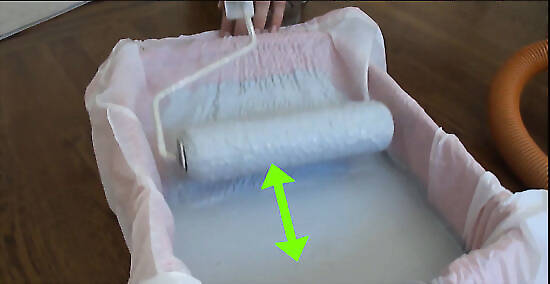
Coat the roller in primer. Place the paint roller into the primer and roll the roller back and forth a few times. The roller should be coated evenly with a thick layer of primer, but not dripping primer when you pick it up. Consider using a roller with an extension rather than a step ladder for this part. A roller with an extension is safer and it will also make your job a bit easier.
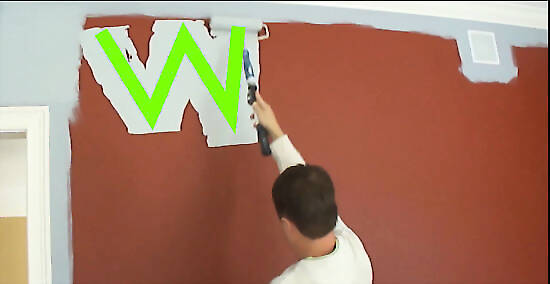
Apply primer in a large “W” shape. When you are ready to begin covering the wall with primer, take your roller and apply primer in a large “W” shape. Then, begin using smooth up and down motions to filling the area around the “W.” Keep painting until the area is completely and evenly covered with primer. Repeat the process on another section. Keep applying your primer in a “W” shape and filling in the areas around the “W” shapes until you have applied primer to the entire wall or room. Work on one portion of the wall at a time to ensure the best coverage. Do not apply too much pressure when you apply the primer. Pressing hard on the roller may result in primer running down your wall and this can leave lines.
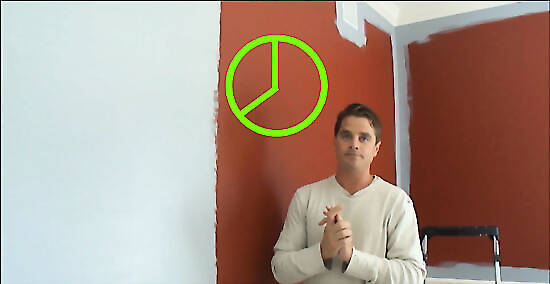
Allow the primer to dry for one day. Before you start to apply your paint, you will need to let the primer dry completely. Leaving it to dry for about one day is a safe amount of time. However, if the primer still seems wet after one day, give it another day.
Painting the Wall
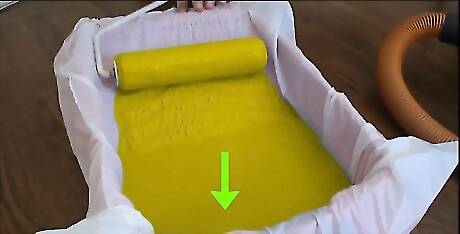
Pour your paint into the tray. When you are ready to begin painting the walls, change your tray liner in the tray or get a new tray. Then, pour about one to two inches of paint into your tray. Use your paintbrush to wipe off any excess paint that runs down the sides and into the rim of the paint bucket.
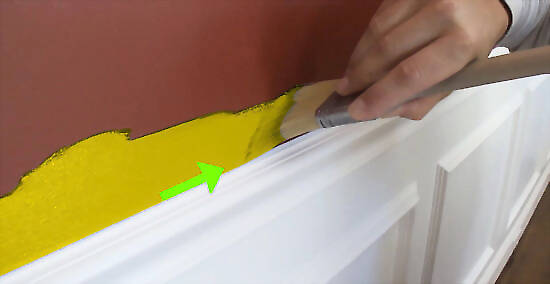
Begin lining the edges of the wall. When you are ready to begin painting, dip your paintbrush into the paint. It should be well-coated in paint, but not dripping. When you are ready, start painting along the edges of your walls and fixtures. Try to create straight even lines. Keep in mind that you may need to go over the paint a few times to ensure that it is even. Take your time and do one small area at a time. Remember that you can always apply painter’s tape to the fixtures and edges if you are worried about not being able to paint in a straight line. Continue to line the edges and fixtures until they are all covered in an even layer of paint.
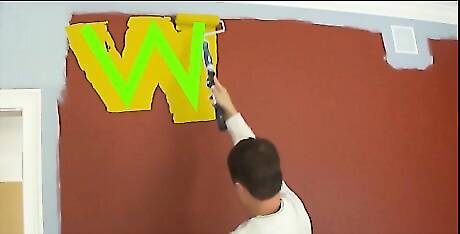
Apply paint in up and down motions. When you have finished painting around the edges and fixtures, you can start to fill in the center of your walls. Start by dipping your roller in the paint and covering the wall by making up and down motions, making sure to overlap the painted edges. Your roller should be covered in an even layer of paint, but it should not be dripping with paint. Do not lift the roller until you finish covering the area.

Allow the paint to dry. The paint will need at least one day to dry, so leave it be. Do not try to replace pictures, furniture, or other items until the paint is totally dry. You may also want to block entrance to the room to ensure that no small children or pets can come into the room and touch the walls. Most walls will need two coats of paint, and some darker colors may need three. Wait until the first coat is dry before applying the second coat. If the room is not well ventilated, then placing a fan in the room and cracking a window will help to keep the air circulating and help the paint to dry faster.













Comments
0 comment